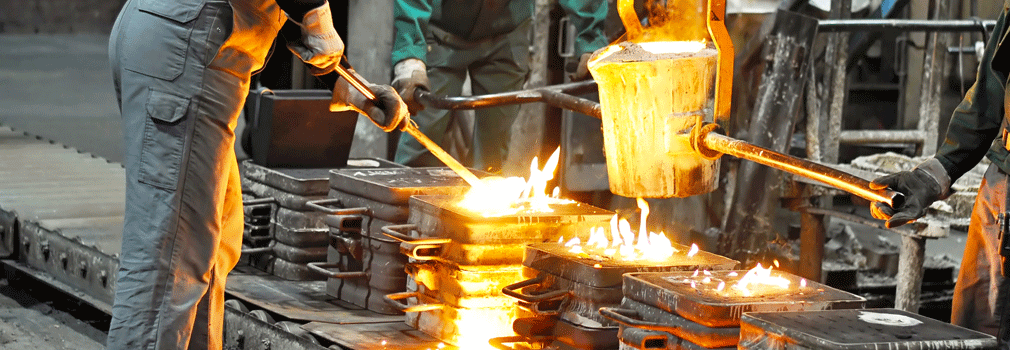

Since the dawn of time, mankind has been shaping things from metal. Earliest records speak of “stones from heaven”, referring to meteorites falling from the sky containing iron, the core ingredient of metal and metalworking.
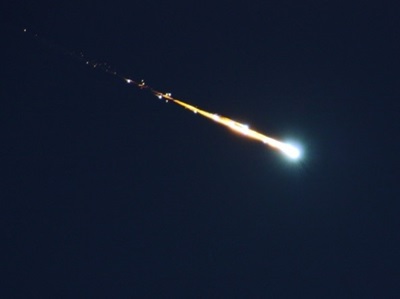
Meteor falling from the sky
Around 9,000 BC, records acknowledge one of man’s first metal accomplishments, a bull-shaped gold ornament made from metalworking. From the Copper age, to the Bronze Age, and on into the Iron Age, man has been perfecting the craft of metalworking and metal casting. Over that time span, metal has been used to shape bowls, manhole covers, pipes, skillets, tools, and weapons.
During the Industrial Age, essentially 18th Century and onwards, demand for machined components and complex machine parts caused metal casting to reach all new heights. Parts could no longer just be metal stamped or machined:
Metal casting was required!
Foundries are the very establishments that transform metal into metals castings. They engage in the pouring of metal into molds or dies, to form castings. Essentially, any hard metal that can be melted, can be cast.
There are various types of foundries involved in metal casting:
The core distinction between these foundries is whether ferrous metal or nonferrous metals are used. Ferrous metals are those containing iron and non-ferrous metals do not contain iron. This is an important distinction, because the nature of hazards and injuries may differ.
Iron, Grey Iron, and Steel. Ferrous Foundries are the most common casting foundry. Here are some products made from these metals:
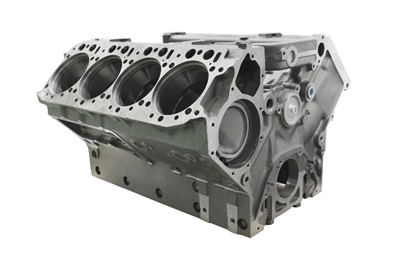
Yep, a common engine block
10 points for whomever can identify the make
Engine blocks, machine tool frames, pipe-fittings, pumps, and valves
Guns, rifles, Aerospace, medical equipment, and high impact wear products.
Ferrous Foundries have a high number of recordable injury cases, with 6.1 for every 100 employees. Steel Foundries have the highest, with around 6.9 for every 100 employees.


A penny is made mostly of zinc
Silver, Platinum, Gold, Copper, Nickle Titanium, Aluminum, Tin, and Zinc
Nonferrous foundries have around 6.3 recordable cases for every 100 employees, with aluminum foundries coming in around 7.8 recordable cases.
Depending on the complexity of the casting performed, foundries will follow a similar casting process.
Here is a look at the Casting Process:
The pattern provides a precise replica of the desired part or end product to be made.
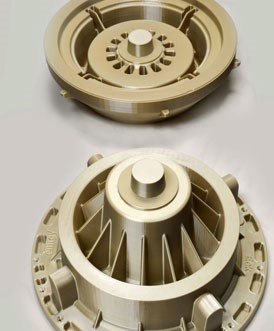
Example of a Gearbox pattern
Preparation of the mold, the rigid frame into which liquid metal is poured, forming a casting. The core making function involves cores being inserted into a mold, shaping the inside of a casting. Behind metalworking, this part of a foundry employs the most workers.
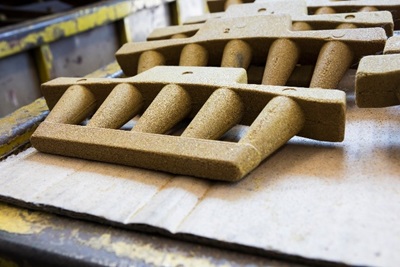
Core Making
Molten metal is poured into the mold.
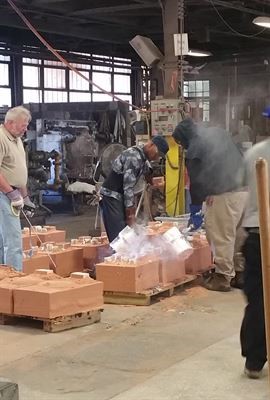
Molten Metal being poured
Once the molten liquid has been poured, the mold cools rapidly.
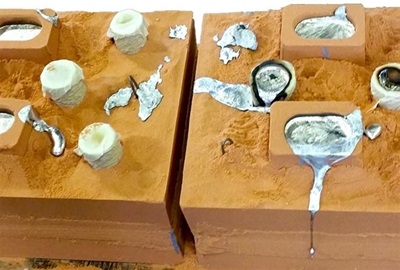
During shakeout, the metal is removed from its mold. During Cleaning and Shot Blasting, focus is placed on the removal of sand.
Castings are heat treated, excess metal is trimmed and removed, castings are polished and the finished part is inspected.
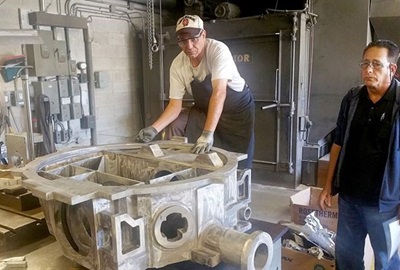
There are roughly 115,000 workers employed in this industry. Here is a look at the top occupations needing personal protective equipment while at work:
Click an occupation to expand and learn more.
Operate machines designed to cut, shape and form metal. There are roughly 56,020 of this ocupation found in Foundries. You will find these workers fabricating metal products, lifting heavy materials and working with their hands. Be sure to check out our Metal Fabrication industry educational page.
Operate casting or coremaking machines to mold or cast metal. Around 21,860 of this occupation works in foundries. You will find this worker operating casting, coremaking and metal forming equipment. Common Job titles for this position are Core Machine Operator, Mold Technician, and Die Cast Technician.
Operate cutting and forming machines. Roughly, 4.5% of the workforce falls into this occupation, roughly 9,850 workers. The majority of these workers are employed in Aluminum production. You will find these workers changing cutting tools, aligning parts, and inspecting metalwork pieces. Common Job titles for this position are CNC Machine setter, CNC machinist, and CNC Operator. Exposure to hazardous equipment is always a concern.
Lubricates machines, changes parts, and performs machinery maintenance. There are a little over 3,980 of this occupation working in foundries. You will find these workers cleaning machine and machine parts. Cleaning solvents, oil and metalworking fluids are a definite concern for these workers. Common Job titles for this position are Lubricator, Maintenance Man, and Oiler.
Operate grinding tools that remove excess metal material or burrs. There are around 7,410 of this occupation working in foundries. You will find these workers sharpening edges and corners, along with polishing metal. Common Job titles for this position are Deburrer, Finisher, Grinder, and Grinding Operator.
Inspectors, Testers, Sorters, Samplers, and Weighers - Inspect machined, fabricated or assembled parts. There are around 6,530 of this occupation working in foundries. Half of these workers are found in foundries. You will find these workers inspecting equipment and structures. Common Job titles for this position are Quality Technician, Inspector, and Picker / Pacer.
Operate computer-controlled machines or robots to perform machine functions on metal. There are around 3,730 of this occupation working in foundries. You will find these workers removing metalwork pieces and installing metalwork pieces. Common job titles for this job occupation are Brake Press Operator, Machine Operator, and CNC Operator.
Pour and regulate the flow of molten metal into molds. There are around 4,060 of this occupation working in foundries. Are 56% of Pourers and Casters work in foundries. You will find these workers placing materials in molds, moving materials and manipulating things. Common job titles are General Caster, Foundry Worker, Furnace Operator, and Iron Pourer. Around 56% of this entire US occupation can be found in foundries.
Help move steel and other materials. Around 3,860 of this occupation works in foundries. That is a large number of hands needing protected. You will find these workers operating conveyors, transporting materials, and operating machines. Common job titles are Laborer and Operator.
Duties include supplying or holding materials, along with cleaning work areas and equipment. Around3,480 of this occupation working in foundries. You will find these workers attaching cables, changing machine gears and handling a lot of material. All of these activities make gloves extremely important. Common Job titles for this position are Laborer, Press Helper, and Material Handler.
Operates furnaces that melt and refine metal before casting or for constructing various types of steel. Furnace types include gas, oil, coal, electric arc or electric induction, open-hearth, or oxygen furnaces. There are roughly around 3,240 of this occupation working in Foundries. Around 24% of the entire US occupation works in Iron and Steel mills and 17.8% in Aluminum production. You will find these workers draining, transferring, and removing molten metal from furnaces and then placing into molds. Common Job titles for this position are Melt Room Operator, Vessel Operator and Central Melt Specialist.
Assemble finished products and parts. There are around 2,400 of this occupation working in foundries. You will find this worker assembling bolts, using many different types of tools, and moving heavy parts. They construct finished products and the parts that go into them. Assemblers and Fabricators use alot of tools, machines, and most importanly need their hands protected.
Use hand-welding, flame-cutting, hand soldering, and brazing equipment to weld/join metal components, fill holes, indentations, or seams of fabricated metal products. There are around 2,140 of this occupation working in foundries. You will find these workers welding components in flat, vertical or overhead positions. Common Job titles for this position are Maintenance Welder, Mig Welder, and Welder/Fabricator
Operate welding, soldering or brazing machines that weld, braze, or heat treat metal products. There are around 2,270 of these workers found in Primary Metals. You will find these workers adding material to work pieces, joining metal components, and annealing finished work pieces. Common Job titles for this position are Fabricator, Mig Welder, Spot Welder, Fitter-Welder, and Braze Operators.
Lay out metal stock, operates machine tools, and assembles parts to make and repair dies. There are roughly 2,100 of these workers. You will find these workers cutting and shaping meta, along with assembling machine fixtures. Common Job titles for this position are Die Maker, Die Machinist, and Tool Repairer.
Operate machines that saw, cut, shear, slit, punch, crimp, notch, bend, or straighten metal. There are around 1,620 of this occupation working in foundries. You will find these workers aligning metal parts and grinding out burrs or sharp edges. This makes cut resistant gloves a high priority for this worker. Common Job titles for this position are Die Setter, Press Operator, Machine Setter and Operator, Press Punch Operator.
Lay out, machine, fit, and assemble castings and parts to metal patterns, core boxes, or match plates. There are around 1,010 of this occupation working in foundries. You will find this worker assembling patterns using hand tool and operating grinding equipment. Common job titles for this occupation are Layout Technician, Metal Pattern maker, and Wax Molder.
All of these occupations have one thing in common; SAFETY is paramount while working in foundries.
For these workers, safety is not expensive, it is priceless.
From hot objects, to sharp metal, and flying particles, a worker needs PPE they can trust and rely on for getting the job done and making it home safely. We map out all the hazards below where MCR Safety gloves, glasses and garments keep these workers protected and safe!
Find the right MCR Safety product that protects you against these common hazards.
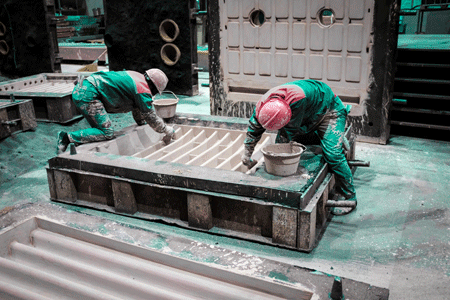
Preparing casting molds is rough on a workers hands. With abrasive resistant gloves, your hands are protected.
Learn More About Abrasive Handling Protection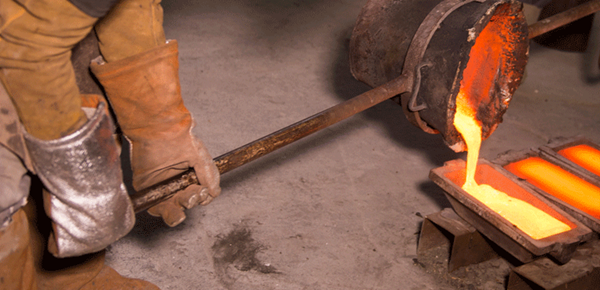
Hot-Casting work requires arms and hands covered with excellent protection. Good thing we manufacture an aluminized backed glove!
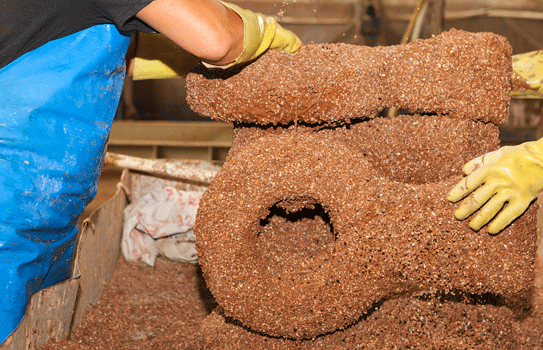
Metal casting involves liquids, moisture, and some hazardous chemicals like Benzene, Formaldehyde, and Sulfuric Acid, just to name a few. Check out the chemical protection offered.
Learn More About Chemicals and Liquids Protection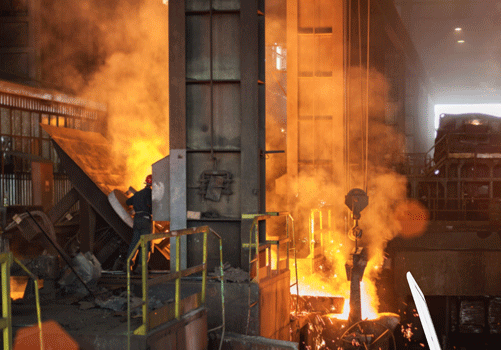
6X greater Anti Fog eyewear and goggles are excellent for working around hot steam.
Learn More About Hot Steam Protection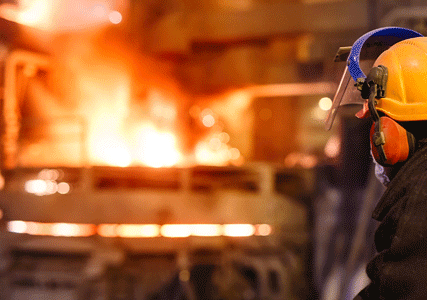
Eyewear hazards are everywhere in foundries, definitely when there is a lot of flying molten metal present. Do not worry; we have a wide variety of premier eyewear styles to choose from.
Learn More About Impaired Vision Protection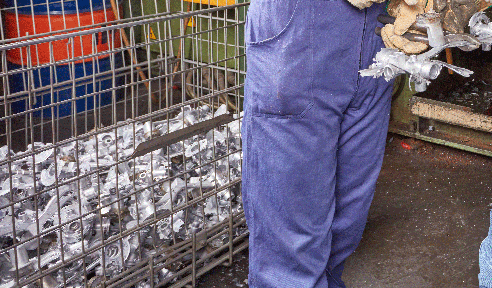
Handling rough metal parts premium premium safety gear.
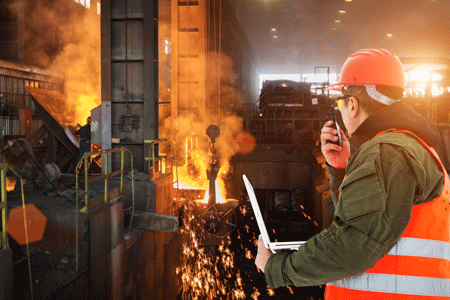
Poor illumination throughout foundries requires workers needing visibility.
Learn More About Overall Visibility Protection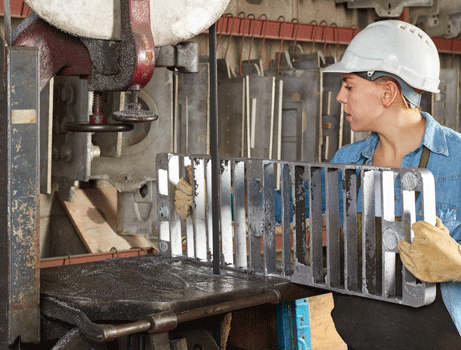
Handling mold plates can easily lacerate a worker's hands. Check out our cut resistant gloves.
Learn More About Sharp Objects Protection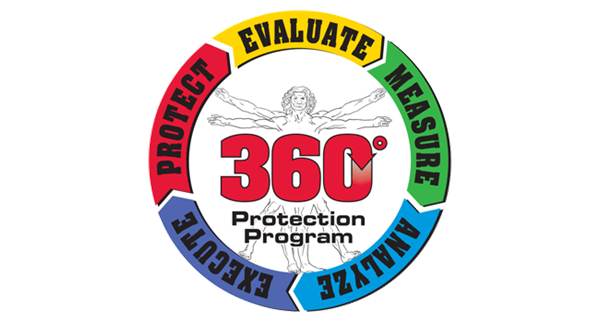
The saying goes, "You don't know what you don't know". Let our 360 team help you know more abut PPE.
Learn More About Lack of Safety Knowledge Protection Why MCR Safety Products?
Why MCR Safety Products? 
MCR Safety manufactures and supplies Personal Protective Equipment (PPE). Simply put, WE PROTECT PEOPLE! We are known world-wide for our extensive product line depth surrounding gloves, glasses, and garments spanning across numerous industries. We offer the total package of safety gear encompassing industrial gloves, safety glasses, protective garments, welding gear, industrial boots, Flame Resistant (FR) gear, face shields, and much more. From a glove standpoint alone, MCR Safety manufacturers and supplies over 1,000 different style gloves. Here are some of the many reasons MCR Safety is your go to source for PPE:
MCR Safety is recognized as a global manufacturer stretching across six countries, with both distribution and manufacturing facilities. Our core competency and specialty is manufacturing and supplying protective gloves, glasses, and garments. The information shown and provided on MCR Safety’s website, its safety articles, industry resource pages, highlighted hazards and safety equipment should be used only as a general reference tool and guide. The end user is solely responsible for determining the suitability of any product selection for a particular application. MCR Safety makes no guarantee or warranty (expressed or implied) of our products’ performance or protection for particular applications.